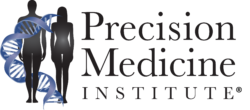Until now, SIDS research was thought to be stalled, yielding little useful information and having little promise of breakthroughs in the near future
Australian researchers say they have reached a turning point in their understanding of the nervous system enzyme butyrylcholinesterase (BChE) in relation to sudden infant death syndrome (SIDS). While the prevailing view is that there is no single cause of SIDS, detection of certain biomarkers could, in time, prove useful toward updated newborn screening programs.
This development will be of interest to hospital and health system leaders coordinating maternity services, and test developers trying to close in on specific SIDS biomarkers.
Newborn Uniform Screening Panel Changes
In the US, a set of federal recommendations, the Recommended Uniform Screening Panel (RUSP), guides newborn screening (NBS) programs. Although states ultimately determine what disorders their NBS program will screen for, the RUSP establishes a standardized list of disorders, according to the Federal Advisory Committees Health Resources and Services Administration (HRSA) information page.
Disorders on the RUSP are chosen based on evidence that supports the potential net benefit of screening, the ability of states to screen for the disorder, and the availability of effective treatments. It is recommended that every newborn be screened for all disorders on the RUSP, states HRSA.
Newer conditions may be in the process of adoption in newborn screening, and conditions can be nominated. However, it appears no new conditions have been added to the newborn screening list since 2018. The nominated conditions page explains more, and the process involves:
- Validation of the laboratory test,
- Widely available confirmatory testing with a sensitive and specific diagnostic test, and
- A prospective population-based pilot study.
Sydney Children’s Researchers Implicate Blood Biomarker BChE in SIDS

SIDS is the leading cause of death in infants born in westernized countries. As its name suggests, SIDS unpredictably causes the sudden death of an infant while they are sleeping, usually between 1 and 6 months old, according to the National Institutes of Health (NIH). Even though campaigns to reduce SIDS by encouraging safe sleep practices have reduced its incidence, SIDS has remained a prominent concern for many parents and healthcare professionals across the world.
Investigating SIDS is challenging, researchers say, but what’s known as the “triple risk model” has persisted in making associations. That is, a vulnerable infant, a critical developmental period, and an exogenous stressor, according to a recent commentary. However, more specific findings remain elusive.
Toward new clues, Carmel Harrington, PhD, and a team of researchers at Sydney Children’s Hospital, Westmead focused their efforts on butyrylcholinesterase (BChE), an enzyme thought to be connected to brain arousal. The study published in The Lancet’s eBioMedicine, titled, “Butyrylcholinesterase Is a Potential Biomarker for Sudden Infant Death Syndrome,” explains how interventions based on precision medicine principles may be able to identify infants who are at risk for SIDS.
This may be the first evidence “that babies who succumb to SIDS are different from birth,” said Harrington, as reported by Reuters via The Washington Post.
Using dried blood spots, the Westmead team examined more than 700 samples from Australia’s newborn screening program to attempt to identify differences between infants who had experienced SIDS and those who had not. BChE stood out as an enzyme that was present in significantly lower levels in children who had died from SIDS, explained the article in eBioMedicine. A deficiency in the level of this enzyme could play an important role in the ability of babies to respond to stimulation and awaken themselves when necessary, ultimately increasing the risk of SIDS.
“Usually, if a baby is confronted with a life-threatening situation, such as difficulty breathing during sleep because they are on their tummies, they will arouse and cry out,” Harrington said in a Sydney Children’s Hospitals Network press release. “What this research shows is that some babies don’t have this same robust arousal response. This has long been thought to be the case, but up to now we didn’t know what was causing the lack of arousal,” Harrington explained.
Harrington’s experience with SIDS has been deeply personal. Solving the mystery has become a life-long mission for her. Twenty-nine years ago, Harrington unexpectedly lost Damien, one of her three children, to SIDS. Harrington gave up her career as an attorney and began working as a research biochemist, dedicating her research career to finding an answer to preventing SIDS.
Refocusing SIDS Research With New Targets
As recently as mid-April, SIDS research was thought to be stalled, yielding little useful information and having little promise of breakthroughs in the near future.
“SIDS research appears to have lost its way,” wrote Paul Goldwater, MD, in a meta-analysis of SIDS research predating Harrington’s breakthrough and published in Frontiers in Pediatrics. “Researchers appear to have forgotten or overlooked the epidemiological risk factors and clinical pathology because these are essential pointers to the underlying cause of SIDS.”
While there are some limitations with the Australian study, the finding may represent a big step forward in SIDS research. For the first time, it may offer closure to families who have been victims of SIDS. Ultimately, the ability to know an infant’s individual risk of developing SIDS may offer an opportunity to eliminate SIDS.
“This discovery changes the narrative around SIDS and is the start of a very exciting journey ahead,” Harrington said, adding to the eBioMedicine discussion concluding that the BChE finding provides a specific avenue for future research into intervention. Although it was noted that it is unknown how common the abnormality is in the wider population, researchers predict that will become clearer with future testing of greater numbers.
This SIDS research highlights how precision medicine is offering healthcare leaders new resources and abilities for a widening variety of conditions. The ability to offer hope for parents concerned about SIDS will be a welcome addition to the tools available.
—Caleb Williams
Related Information:
Refocusing SIDS Research: Is Butylcholinesterase a Predictive Biomarker?
Researchers Find Blood Marker That Could Help Identify Newborns With SIDS
World First Breakthrough Could Prevent SIDS
Only Halfway There with Sudden Infant Death Syndrome
Butyrylcholinesterase Is a Potential Biomarker for Sudden Infant Death Syndrome
The Science (or Nonscience) of Research Into Sudden Infant Death Syndrome (SIDS)
